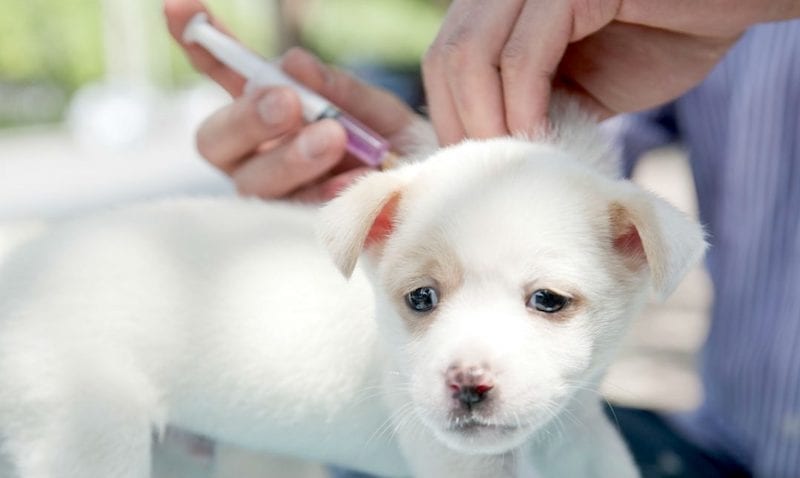Email Address
Info@themis.com
Phone Number
Fax: 001 (407) 901-6400

Vaccination is a traditional event for most dog breeders from the first months of the appearance of a dog in the house.
Many owners doubt the need for this procedure and refuse vaccinations. A huge number of infections can attack the dog’s body. The most common are plague, rabies, hepatitis, leukemia, adenovirus, parvovirus enteritis and many others. This list will help convince doubting owners that vaccinations must be done on time and in full.
Particular emphasis should be placed on rabies. This disease is dangerous both for the pet and for people who are close to it. Inoculating dogs against this infection is imperative. When the pet is 3 months old, it's time to start.
The next painful question is about the quality of the vaccine, their types, prices and so on. Worrying and checking the information several times is absolutely the right decision. What do you need to pay attention to? To the vaccine supplier! These products require a reverent attitude, adherence to transportation, storage, and not to mention the manufacture of the drug.
There are two ways to purchase the drug:
A situation may arise that the owners will have to store the vaccine themselves. There are some safety precautions, they are quite simple, but their implementation is necessary. Store in a poorly lit place with a temperature not exceeding 28 ° C. The freezer is a forbidden place, there the medicine will lose its properties, it is enough to put it on the shelf of the refrigerator. The medication should be in a concentrated form so is without dilutions. The vaccine can be transported. For this a thermos with ice or regular newspapers is used. The drug must be carefully wrapped in them.
We turn to the vaccine itself: how and where to do it? There are options again.
Before vaccination, make sure that the veterinarian inspects the pet. The dog must be absolutely healthy before the injection. Otherwise, not only can the vaccine not work, complications can arise.
About 10 days before vaccination, you need to carry out one important procedure. It is required to remove worms from the body of the dog. The problem with this disease is that the owner in the first stages may not know that his dog is sick. However, when vaccinated, the body cannot produce enough antibodies. Therefore, even if confidence in the absence of worms is 100%, it is the right decision to play it safe. Additional consultation is necessary if the dog is pregnant or planning to mate.
There are two types of medicine for vaccines. The choice of a particular species depends on what disease they are directed against. There are "dead" vaccines. These are vaccines in which all bacteria are initially killed. They can also be called "passive". Most often, they are liquid and fight rabies, leptospirosis and other diseases.
In addition, there are "live" vaccines or "active" ones. After their introduction, additional funds are needed to kill the antibodies. These vaccines are often represented by solid formulations that are wax-like in structure. The purpose of these vaccinations is in the prevention of plague, parvovirus, canine hepatitis.
It does not matter where it was decided to instill a dog – at home or in the clinic – the main conditions for this process are hygiene and sterility. Injection is not different from human vaccination. The syringe must be necessarily disposable and not used before. Before the injection, it is necessary to treat the skin with alcohol as thoroughly as possible. The injection site is wiped only if the vaccine is "dead". Otherwise, it is contraindicated on the contrary.
If the disease is already in the body of the pet, then intravenous injection can be used. Thus, immunity will form much faster. But with standard vaccinations, intramuscular injections are much better.
Modern quality vaccines give a high percentage of effectiveness. According to statistics, only 1% of vaccinated dogs still fell ill, despite the introduction of the vaccine. Protecting your pet by 99% is what a responsible loving owner should do.